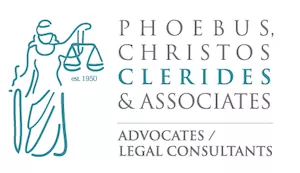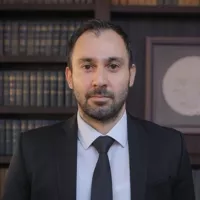- within Transport, Finance and Banking and Law Department Performance topic(s)
- with readers working within the Property industries
Many prospective parents assume that adoption begins with lawyers and judges. In truth, the first—and most delicate—stage is "placement": moving the child into the daily care of the people who hope to become Mum and Dad. Cyprus regulates that step in Law19(I)/1995 and the Adoption Rules of 1954. Here is a clear, step‑by‑step look at what the law requires, the timelines involved and the safeguards designed to protect the child's welfare.
1| Two legal routes to placement
- Through the Social Welfare Services (SWS)
– Articles 10 &11
- The birth parents (or legal guardian) sign a written authorisation allowing SWS to arrange the placement—whether or not they know who the adoptive parents will be.
- Direct placement –
Article12
- Birth parents place the child directly with would‑be adopters, but they must first notify the local Welfare Officer at least three months in advance (Article13(1) &(2)).
In both tracks, the Welfare Officer investigates the suitability of the proposed carers within three months of receiving notice. In urgent or exceptional cases the Family Court can shorten that wait.
2| The "no‑move" rules once placement is underway – Article 8
- After a formal adoption application is filed, birth parents cannot remove the child from the applicants' care without a court order.
- If the child has lived with the applicants for six months or more before filing, nobody can remove the child against the applicants' wishes—again, unless the court says so.
- Even before an application is filed, a carer who has given written notice of intent to adopt enjoys similar protection after the child has been with them twelve months.
Anyone who does want to move the child must apply personally to the Family Court and serve notice on the court‑appointed guardian ad litem (Adoption Rule 12).
3| What the court looks at when deciding an adoption
Cypriot judges circle back to one principle: "the welfare of the child shall be the first consideration" (Article 5(1)). In practice they ask:
- Will the adoption provide a stable, loving home?
- Are the applicants medically and financially fit?
- What does the child want, if old enough to express a view?
- Do practical advantages (citizenship, inheritance rights) genuinely serve the child, or are they the main motive?
Case law like Charalambous (2011) confirms that such benefits may be counted positively, provided the adoption is clearly child‑centred.
4| Typical timeline from placement to final order
- Notice & assessment – 3 months (or less if the court shortens it).
- Child lives with carers – minimum 6months before filing.
- File adoption application – court appoints a guardian ad litem.
- Hearing & decision – usually 2‑4 months later, faster if uncontested.
- Registration – the decree is entered in the Adopted Children Register, giving the child the new surname and full legal status of a natural child.
5| Practical tips for would‑be adoptive parents
| Do | Avoid |
|---|---|
| Notify the Welfare Officer in writing early; the 3‑month clock runs from receipt. | Informal handovers without notice—courts can refuse the adoption. |
| Gather documents: birth certificates, medical reports, police certificates. | Relying on verbal promises from birth parents about consent. |
| Keep a diary of the child's routine and bonding—useful evidence later. | Moving house or country mid‑process without telling SWS. |
| Treat the guardian ad litem as an ally; their report carries weight. | Framing the adoption mainly as a migration shortcut—judges dislike it. |
How Phoebus, Christos Clerides & Associates LLC can help
Our adoption team works hand‑in‑glove with Social Welfare Services and the Family Court to smooth each procedural step:
- Drafting airtight notices and consent forms so timelines start running without hiccups.
- Coaching clients on home‑study preparation and evidence collection.
- Applying for accelerated placement where the child's circumstances demand speed.
- Navigating cross‑border elements—immigration, dual nationality, foreign birth certificates.
From first enquiry to the joyful day your child's new surname is entered in the Register, we aim to make the legal path clear, compliant and child‑focused—so you can concentrate on building your family.
The content of this article is intended to provide a general guide to the subject matter. Specialist advice should be sought about your specific circumstances.
[View Source]

